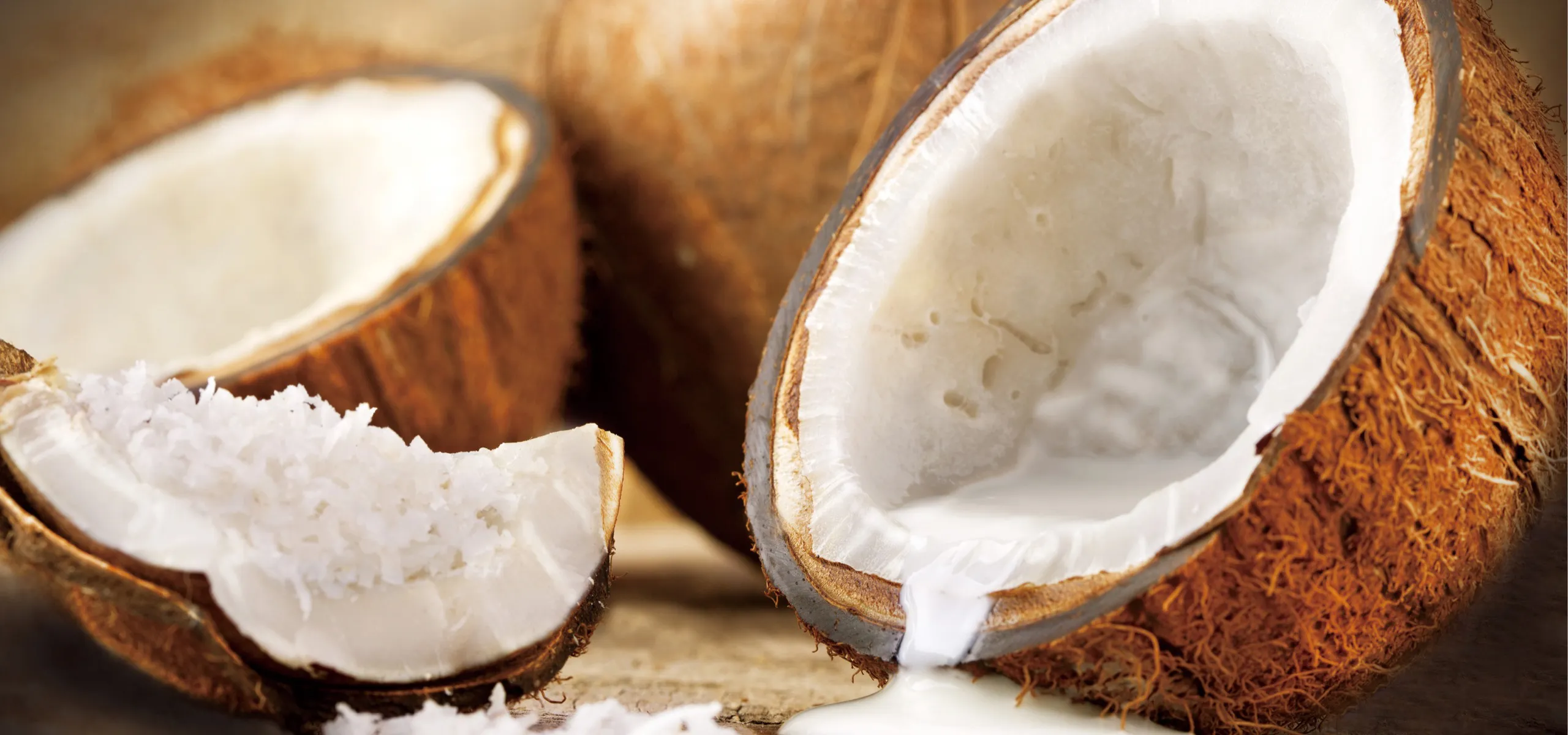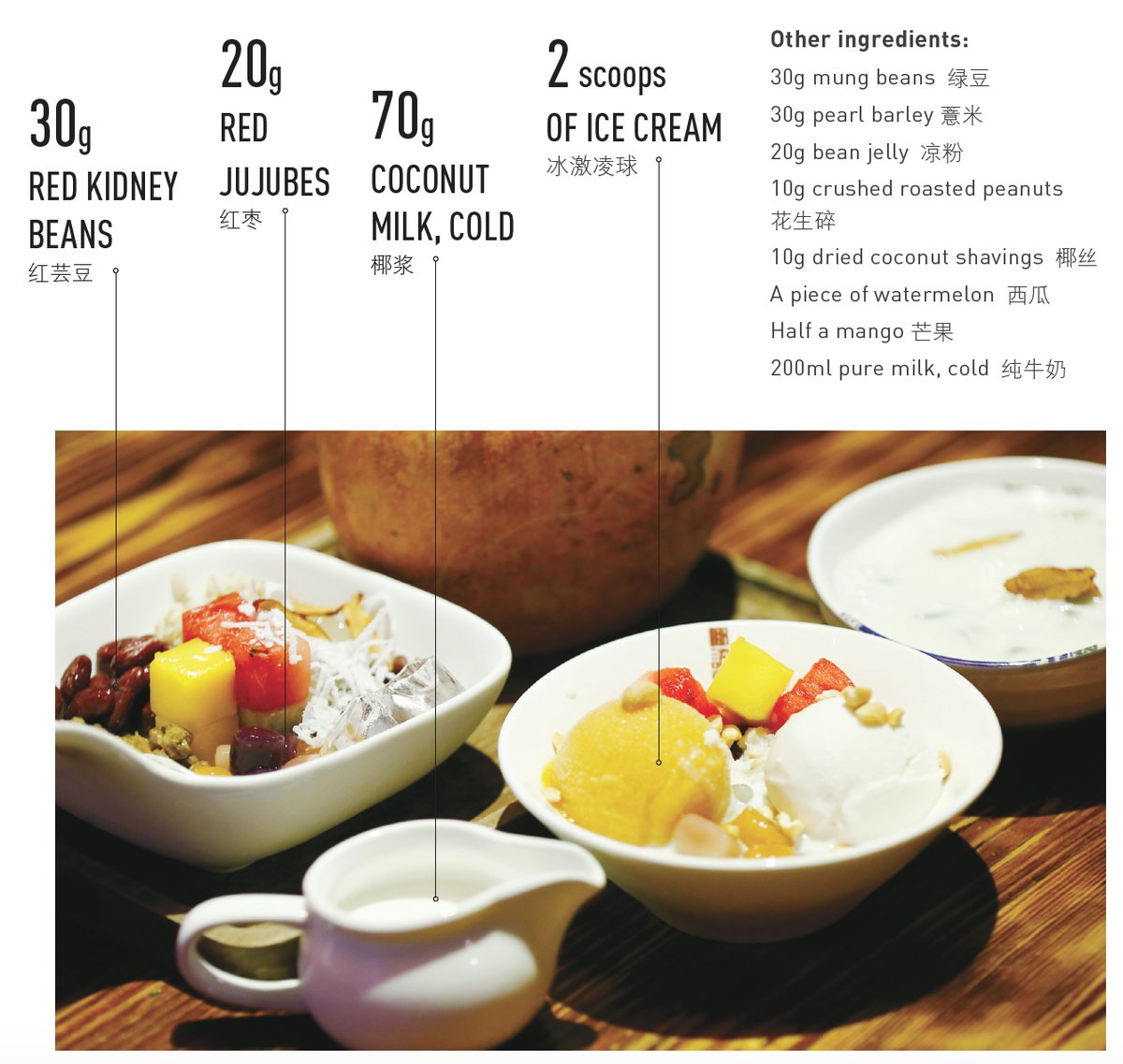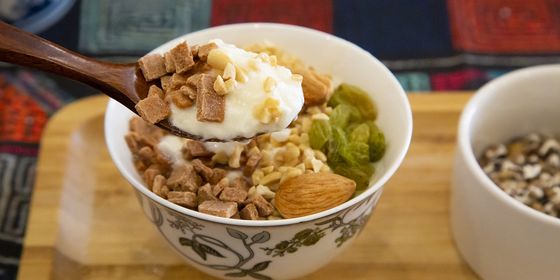A “lifesaving” summer dessert from China's southernmost province combines coconut milk, ice, and everything nice
“Nectar from coconut trees, collected in a bowl of jade-white aroma,” exclaimed poet and foodie Su Shi (苏轼) of the Song dynasty (960 – 1279), also known as Su Dongpo (苏东坡), after tasting coconut milk for the first time in the 11th century on the southern island of Hainan.
The fruit was said to be a comfort food for Su, ousted from his government post by a rival court faction and exiled to one of the empire’s southernmost outposts. Today, coconuts continue to be a cheap, nourishing treat in this tropical holiday paradise, many enjoying its milk in qing bu liang (清补凉), a dessert locals dub a “life-preserving” necessity in the scorching summer.
Qing bu liang’s name speaks for itself when it comes to merits and popularity—it literally means “refreshing, nourishing, cool.” Typical ingredients include mung bean, pearl barley, red jujube, seasonal fruits, syrup, ice, and sometimes milk, all cooked up in a sweet and tasty porridge.
One folk story says the name of the dessert was given by General Zhao Tuo (赵佗) of the Qin dynasty (221 – 206 BCE), who led soldiers from the Central Plains in battles against ethnic groups in the Lingnan region (including present-day Guangdong, Guangxi, and Hainan). The army was not used to hot and humid weather, and many soldiers came down with a panoply of tropical diseases. The military doctor used a mix of ground herbs, lotus seeds, dried lily bulb, pearl barley, and Chinese yam to revive their health. When General Zhao tasted the concoction, he commented, “This food should be called qing bu liang, since it can [help] dispel heat and strengthen vitality.”
People in Guangdong, Hong Kong, and Macau have been drinking qing bu liang ever since, often adding supplements like foxnuts, longan, and even chicken and pork. It’s believed to dispel heat and damp, strengthen the spleen, and nourish the lungs. Hainan’s qing bu liang combines the Cantonese version with shuiguo lao (水果捞), a dessert that soaks fruit in milk or yogurt. A cup of Hainanese qing bu liang could hold dozens of different ingredients: bean jelly, watermelon, mango, coconut meat (or dried coconut shavings), cooked mung bean, red bean, taro, quail eggs…anything the chef can think of. It’s all combined with brown sugar syrup, ice, coconut water or coconut milk, and sometimes a few scoops of ice cream to top the thing off.
There’s a qing bu liang shop on every street corner across the province, with flavors and ingredients varying from shop to shop. For first-time visitors to the capital city, Haikou, the night market by the south gate of Hainan University, and the Historic Qilou Streets (骑楼老街) around Zhongshan Road are highly recommended sampling spots.
Steps
- Soak the mung beans and pearl barley in water for an hour. Cook them in a pressure cooker for half an hour, and then set aside to drain and cool.
- Wash the red kidney beans and red jujube. Boil them for 15 minutes, and set aside to drain and cool.
- Heat the milk and coconut milk together on low heat and stir the liquid for 2 to 3 minutes. Then place in the fridge to cool for 15 minutes.
- Cut the watermelon, mango, and bean jelly into small cubes.
- Mix all the ingredients in a bowl, and pour in the cold milk and coconut milk.
- Garnish with peanuts, dried coconut shavings, and ice cream.
Keeping Cool With Hainan's ‘Qing Bu Liang’ is a story from our issue, “Call of the Wild.” To read the entire issue, become a subscriber and receive the full magazine.













